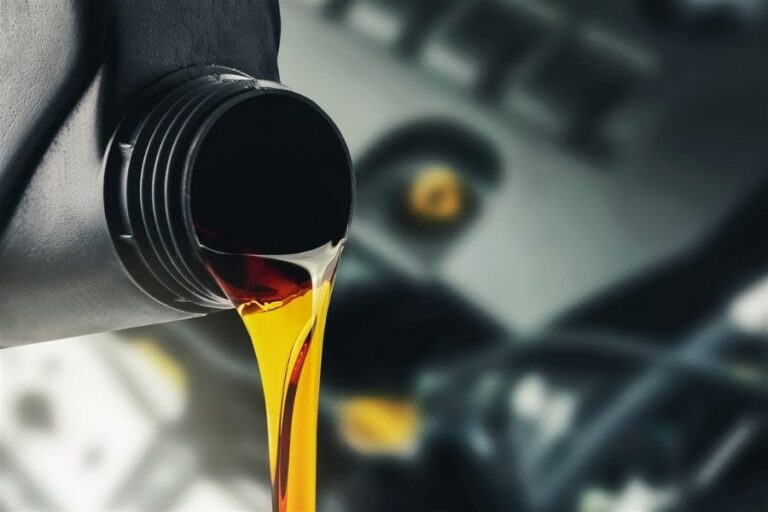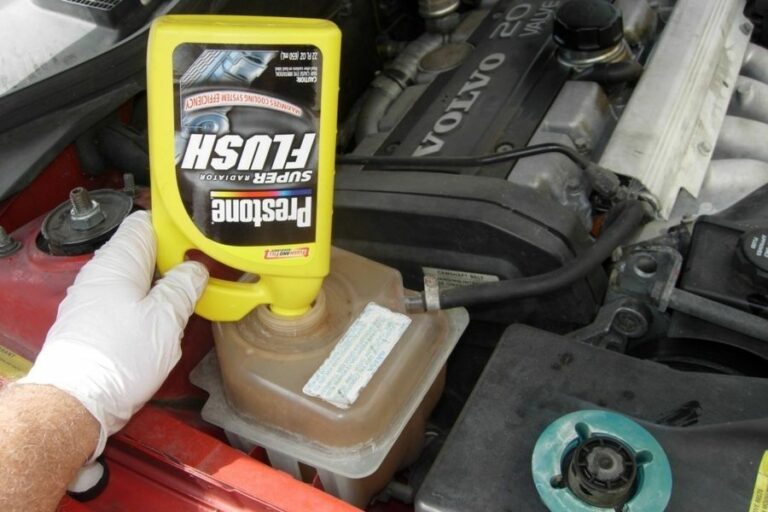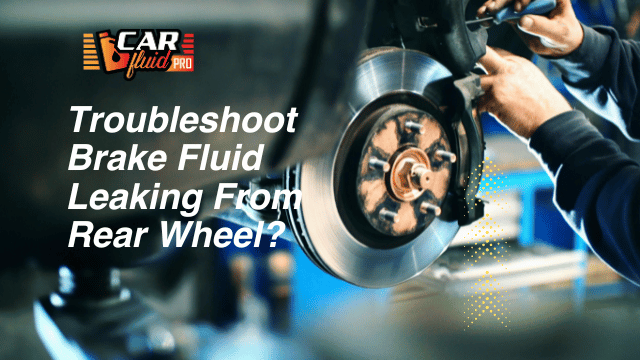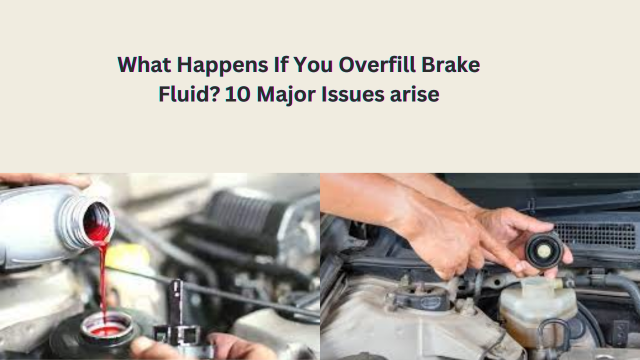Do You Have To Take Off Brake Fluid Cap When Changing Brake Pads?
Out of many queries that often appear on auto repair forums, one such query is whether the brake fluid cap needs to be removed when changing brake pads. The answer is yes. Not taking off the reservoir cap of the braking system can have significant consequences.
On the other hand, opening up the cap puts you at risk of contaminating your brake fluid. So, what should you do? Let’s find out the answer of do you need to open brake fluid reservoir when changing brakes.
Why You Should Take Off The Brake Fluid Cap When Changing Brake Pads?
You should take off the brake fluid cap or loosen it when changing brake pads to make your job easier for you. Also, not taking off the cap can cause an overflow of brake fluid. In the worst-case scenario, you might even blow off your brake lines.
Make Your Job Easier
If you don’t take off the reservoir cap when changing brake pads, you will struggle to finish the job. In some cases, you might not be able to complete the brake pad replacement at all.
Meanwhile, you would be putting undue stress on the brake system. You can also do significant damage to the brake caliper piston.
You have to compress the caliper piston during a brake fluid replacement. Pushing the caliper piston essentially means pushing the brake fluid.
Since the fluid is non-compressible it needs to release the extra pressure somehow. Otherwise, it would push back on the caliper piston and prevent you from compressing it.
Taking the cap off opens up the closed brake system. It permits the brake fluid to release the extra pressure you are putting on the caliper piston. As a result, you can smoothly compress the piston and change the pads.
However, opening the cap also exposes the brake fluid to the environment. The hygroscopic fluid might soak moisture from its surroundings. Plus, dirt and debris might contaminate it. This can severely affect your brake performance in the future.
So, it is best not to leave the open brake fluid reservoir totally exposed. Use the cap (or something suitable) like a temporary lid to cover it.
Read Also: How To Troubleshoot Brake Fluid Leaking From Rear Wheel?
Prevent Brake Fluid Overflow
When you compress the brake caliper piston with a closed reservoir cap, you push the brake fluid which has nowhere to go. As a result, the fluid can overflow from the reservoir to escape the stress. This usually happens when the brake fluid reservoir is full to its brim.
Taking off the cap allows free movement of the fluid inside the reservoir. So, it can help you prevent fluid overflow during brake pad replacement.
You can still expect to have some spillage if the reservoir is at capacity. But it would be less messy and more controllable than if you had kept the cap on.
Brake fluid overflow can have damaging consequences. The fluid can harm the connections and sensitive components in your engine bay. It can also cause stains and corrosion if you don’t clean it up.
Don’t Blow Up Your Brake Lines
Forcing the caliper piston with a closed reservoir cap essentially means fighting against the internal pressure of your brake system.
If your brake lines are old they cannot withstand this struggle. As a result, they will burst.
Your car’s brake lines are generally strong. They are able to hold theirs against a lot of pressure.
But with time the brake lines can get rusty and corroded. They can also develop numerous weak spots and small cracks.
These factors can compromise the lines’ quality and result in blowing up when subjected to undue stress.
A burst brake line means your vehicle will become unfit for driving. Plus, you have to drag it to the repair shop.
Putting in new brake lines can cost around 300$ depending on your model. Not to mention the hassle and time losses. So, take the brake fluid cap off when you are putting in new brake pads.
Read Also: How to Deal with Brake Fluid Light On But Fluid Is Full?
How To Change Your Brake Pads Like A Pro
If you learn the correct way to change brake pads, you won’t need to visit the mechanic for this job. It can save you around a hundred dollars or more in labor costs. Plus, you will be acquiring a useful life-skill.
Get The Correct Tools
Any professional will first gather all the necessary tools before starting the replacement. So that there wouldn’t be any interruption during the job.
First of all, you need to protect your hands. So, get some good mechanic gloves. Then arrange for jack and jack stands for the lift up.
To unscrew the wheel you will require a lung wrench. Also, get chocks to prevent the car from rolling away during the job.
Besides these usual tools, you will need a C-clamp when retracting the piston. Also, keep a turkey baster or bulb baster close at hand. This will come in handy if you have to draw out any overflowing brake fluid.
Access the Brake Assembly
Place the vehicle on a solid, level, and clean surface. Make sure you have put the car in parking mode, turned off the engine, and wait for it to go cold.
Chock the wheels and unscrew the lug nuts on the side you will be working on. Now, jack the car up, and place the jack stands.
Once you have the vehicle in the above position, remove the lug nuts completely. Pull the wheel straight towards you to detach it. You now have access to the brake assembly.
Read Also: Brake Fluid Leaking Under Middle of Car | What to Check?
Remove the Slider Bolt
Reach under the vehicle to find the pair of slider bolts that maintains the brake caliper’s alignment. Usually, unscrewing the lower bolt is enough. It shall easily slide out once you have loosened it all the way.
When you remove the lower bolt, the brake caliper shall pivot up. Normally, the hydraulic line shall adjust itself to allow this movement.
If it doesn’t, there might be something in your process. So, instead of disconnecting the brake lines, do not advance any further.
Put everything back as it were and seek professional help. On the other hand, if the brake line allows the movement of the piston, carry on with the job.
Replace The Brake Pads
With the caliper piston pivoting up, you have full access to the brake pads. You can simply reach and slide them out.
Worn-out brake pads have lost most of their thickness. So, they are already loose, and removing them should not be a struggle.
Now put in the new pads with their retaining clips. Make sure you don’t mix up between the right and left-handed clips.
So, it’s best to put them in one at a time. There are retaining clips that do not require any screws. They naturally pop into their respective positions.
When you buy new brake pads, the packaging usually offers a mini graphite-based grease pack. Apply some of it to the brake pads to prevent squeaking.
Read Also: Why Is Brake Fluid Removed From The Master Cylinder Prior To Working On Disc Brakes?
Take Off the Brake Fluid Cap and Retract the Piston
This is the part where you have to ensure the brake fluid cap is off. Because you will be retracting the caliper piston and thus increasing the brake system’s internal pressure.
The pistons are designed to press on the pads. Which in turn squeezes the rotor and stops the car. You have to retract the piston the other way. Or else, the caliper cannot slip down into its place.
You can use a c-clamp to retract the piston (or pistons, depending on your vehicle’s model). A piece of plywood can also work if you don’t have a clamp.
Be careful of the brake fluid level in the reservoir. If it’s full to the brim and seems like it will overflow, use the basket to auction off the excess fluid before retracting the piston.
Ideally, you take the cap off just before retracting the piston. And once you have fully pushed it in, you can put the cap back on. You don’t want to keep the cap off for too long due to contamination risks.
Reassemble the Other Parts
You can now pull the caliper down over the newly installed brake pads. Since the pistons are retracted the caliper shouldn’t have any problem coming down.
After getting the caliper in place, put back the slider bolt and tighten it. Then reinstall the tire and secure the lug nuts. To settle the new brake pads, start the car and pump your brakes 15-20 times.
You can then go for a test drive on a safe street. First, keep your vehicle’s speed within 5-10 mph.
If you feel everything is working fine, increase it up to 35-4o mph. This test drive is mandatory to ensure that you have put in the brake pads correctly.
Avoid These Common Mistakes When Changing A Brake Pad
A properly functioning brake system can make the difference between life and death. So, it’s essential you perform brake pad replacement as accurately as possible. Here are some mistakes to avoid-
- Buy brand-specific brake pads. Off-brand purchases have a high risk of being a misfit.
- Don’t compromise quality for the price. Cheap brake pads will affect your driving performance and also require frequent replacements.
- Protect the brake fluid when you take the cap off. Otherwise, contamination and air entry will affect how the brake works.
- Do not avoid cleaning the parts of the braking system if they are dirty. You might be tempted to do so when pressed for time.
- Keep track of the parts you disassemble them.
- Don’t make the lug nuts too tight when you put them back.
Read Also: Does Brake Fluid Leak When Car Is Off? Explained
FAQs.
Hopefully, you understood why do you need to open brake fluid reservoir when changing brakes pads. Still, there might be some questions on your mind. Here are some FAQs that you might want to know.
How do I know I have to change my brake pads?
The commonest sign is a squeaking or grinding noise when you apply the brakes. You will also notice a vibration in the brake pedal. Plus, your car will take longer to stop than usual. Inspection will reveal thin brake pads.
Do all cars require taking the brake fluid cap off when changing the pads?
It is essential to take off the brake fluid cap in most cars, as they have a sliding caliper brake assembly. However, some cars have a fixed caliper system. In these cars, you may leave the cap on.
What should I do if the brake fluid spills during a brake pad replacement?
You should use a highly absorbent paper towel or cloth to soak up the fluid immediately. Then apply some degreaser on the area where the fluid spilled. Let the degreaser sit for some time, then clean it up with another cloth.
How much time will it take to put in new brake pads?
You might need around one hour to complete the process. This includes the time from setting up the workplace to cleaning up afterward and test driving. However, it can take more or less depending on how familiar you are with auto repairs.


![Is Penetrating Oil Flammable [High flammability Reason Answered]](https://carfluidpro.com/wp-content/uploads/Is-Penetrating-Oil-Flammable-High-flammability-Reason-Answered-768x512.jpg)



